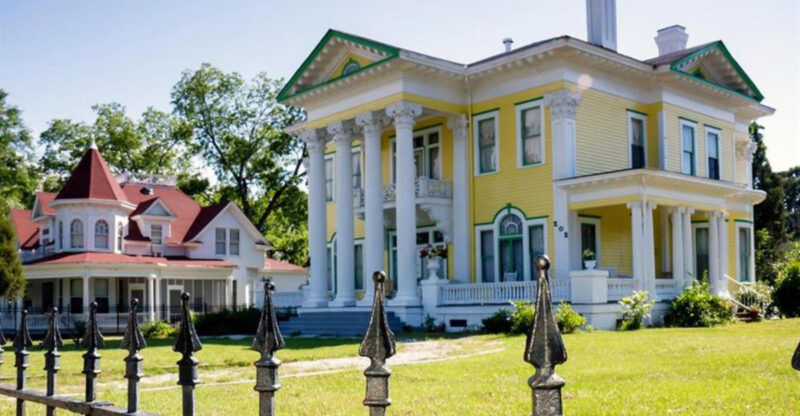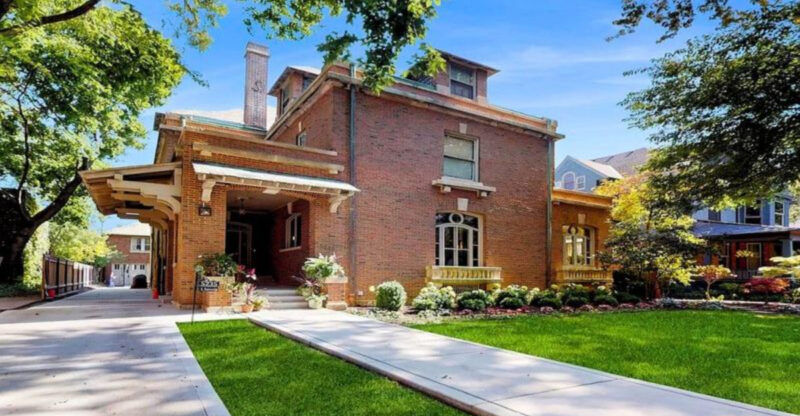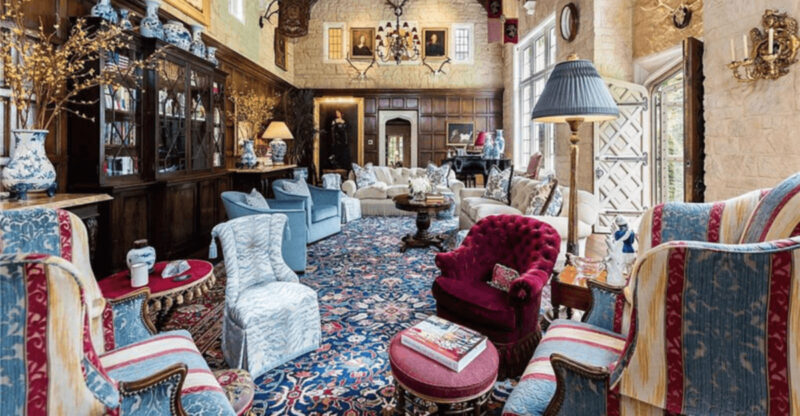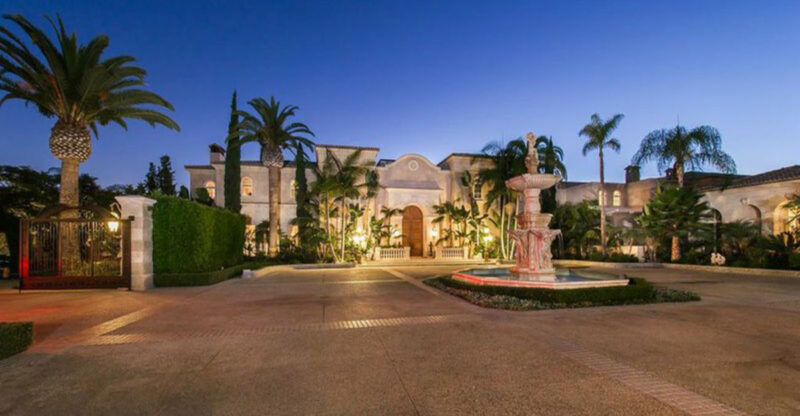9 Historic Home Fronts That Showcase OKC’s Classic Curb Appeal Style
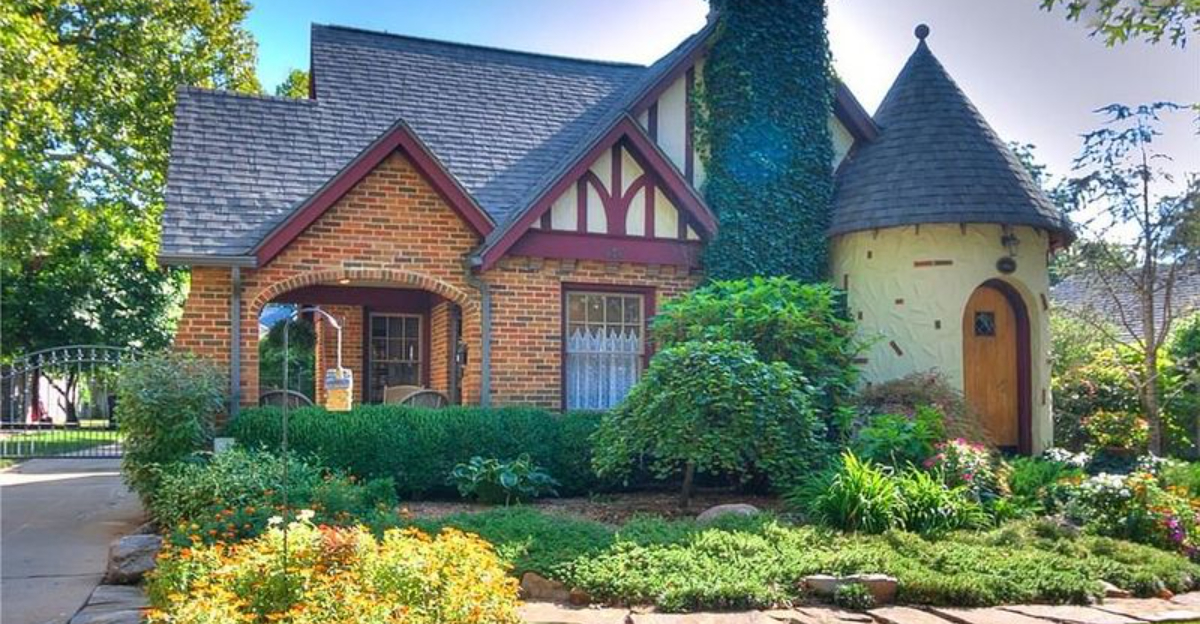
Oklahoma City hides architectural treasures that tell stories of our past through their distinctive facades.
Walking through historic neighborhoods feels like stepping back in time, with each porch, gable, and column revealing craftsmanship rarely seen in modern construction.
These nine historic home fronts represent the best of OKC’s architectural heritage and continue to inspire homeowners and designers today.
1. Overholser Mansion: The Grand Dame of Heritage Hills

Built in 1903, this majestic French chateau-style mansion stands as Oklahoma City’s first grand home. The imposing limestone exterior features ornate balconies, intricate cornices, and a distinctive turret that catches every passerby’s eye.
What makes this mansion special isn’t just its size but the meticulous attention to symmetry. The perfectly balanced facade showcases large windows framed by decorative stonework, while the wraparound porch invites visitors to step back in time.
Henry Overholser, often called the “Father of Oklahoma City,” spared no expense creating this 11,700-square-foot masterpiece. The home served not just as a residence but as the social center of early Oklahoma City, hosting politicians and celebrities of the era.
2. Hales Mansion: Timeless Elegance in Brick and Stone
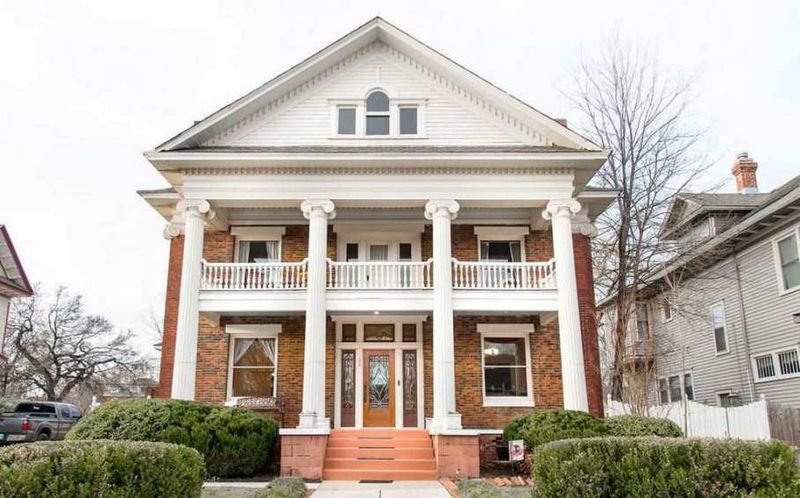
Standing proudly since 1916, the Hales Mansion captures the essence of Georgian Revival architecture with its perfectly symmetrical facade. Red brick walls contrast beautifully with white stone trim, creating a stately appearance that commands respect from the street.
If you look closely, you’ll notice the careful attention to classical proportions. The centered entrance features a portico supported by slender columns, while evenly spaced windows march across the facade with military precision.
Fred Hales, a prominent Oklahoma businessman, commissioned this residence as both a family home and a statement of success. The mansion’s dignified presence continues to influence residential design throughout Oklahoma City, proving that classic proportions never go out of style.
3. Donald Pollock House: Prairie School Perfection
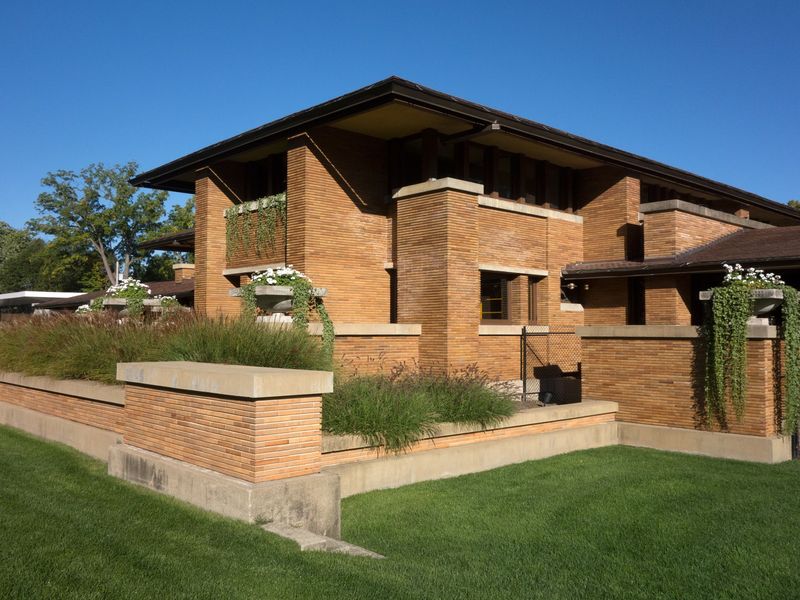
Low-slung rooflines and horizontal emphasis make the Donald Pollock House a textbook example of Prairie School architecture. Built in 1926, this home features the distinctive style championed by Frank Lloyd Wright, with broad eaves and a connection to the surrounding landscape.
The front facade blends natural materials seamlessly – warm-toned brick, natural wood trim, and decorative concrete elements. Unlike more ornate styles, the beauty here lies in clean lines and thoughtful proportions rather than excessive decoration.
Donald Pollock, a local attorney, embraced this progressive architectural style when most of his contemporaries opted for more traditional designs. His forward-thinking choice resulted in one of OKC’s most architecturally significant homes, showcasing how modern ideas were taking root in the growing city.
4. Charles Frost Home: Victorian Splendor in Gingerbread Trim
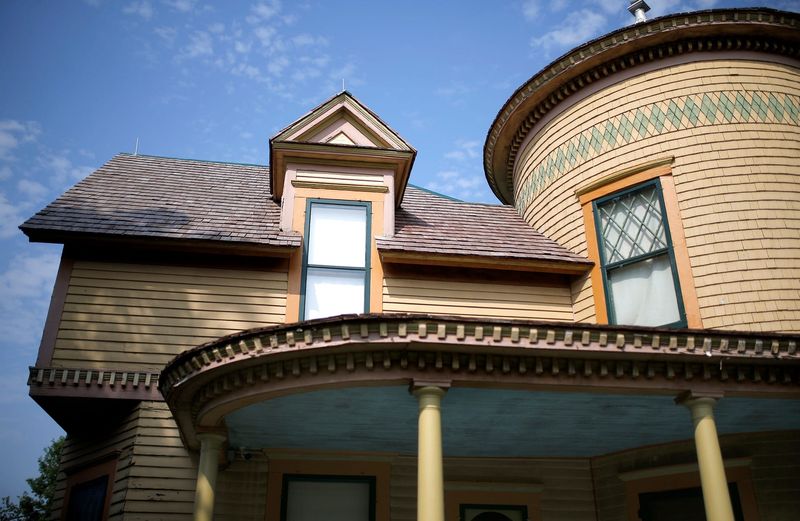
Whimsical and intricate, the Charles Frost Home dazzles with its Queen Anne Victorian style and elaborate “gingerbread” woodwork. The asymmetrical facade features a prominent corner tower, multiple gables, and a wraparound porch that practically begs for a rocking chair and glass of lemonade.
Did you know this colorful home once faced demolition? Painted in historically accurate hues of burgundy, forest green, and cream, the home’s decorative details include spindle work, carved brackets, and patterned shingles that showcase the craftsmanship of a bygone era.
Charles Frost, a railroad executive, built this showpiece in 1893 during Oklahoma Territory days. Today, it stands as one of the few remaining examples of high Victorian architecture in OKC, preserved through the dedication of heritage-minded owners.
5. Walter & Frances Edwards Home: Spanish Colonial Charm
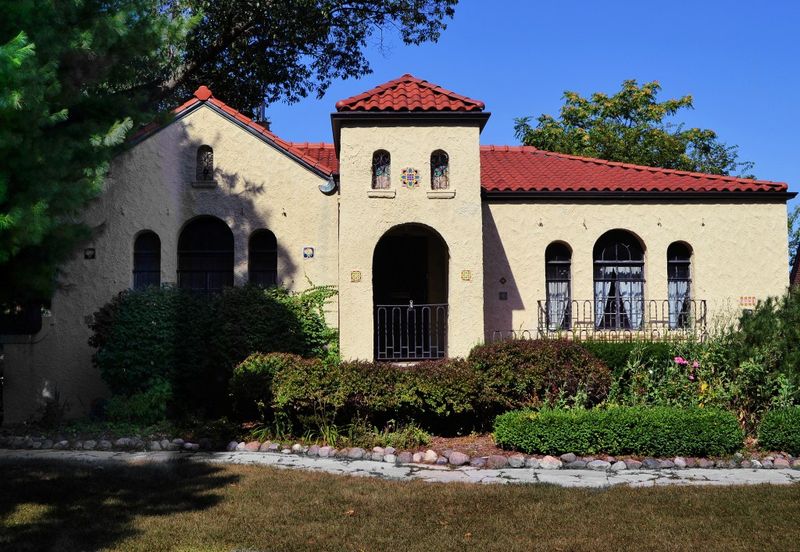
Terracotta roof tiles and stucco walls transport visitors to Mediterranean shores at the Walter & Frances Edwards Home. Built in 1926 during the Spanish Colonial Revival movement, this distinctive residence features an asymmetrical facade with a prominent arched entryway that draws the eye immediately.
The front courtyard, enclosed by a decorative wrought iron gate, creates an outdoor room that blurs the line between interior and exterior spaces. Small, deep-set windows and decorative tiles add authentic touches that make this home stand out in a city dominated by different architectural traditions.
Walter Edwards, an oil industry pioneer, brought this architectural style back from his travels through California and the Southwest. His home helped popularize Spanish Colonial elements throughout Oklahoma City neighborhoods during the building boom of the 1920s.
6. Goodholm Home: Craftsman Ideals in Wood and Stone
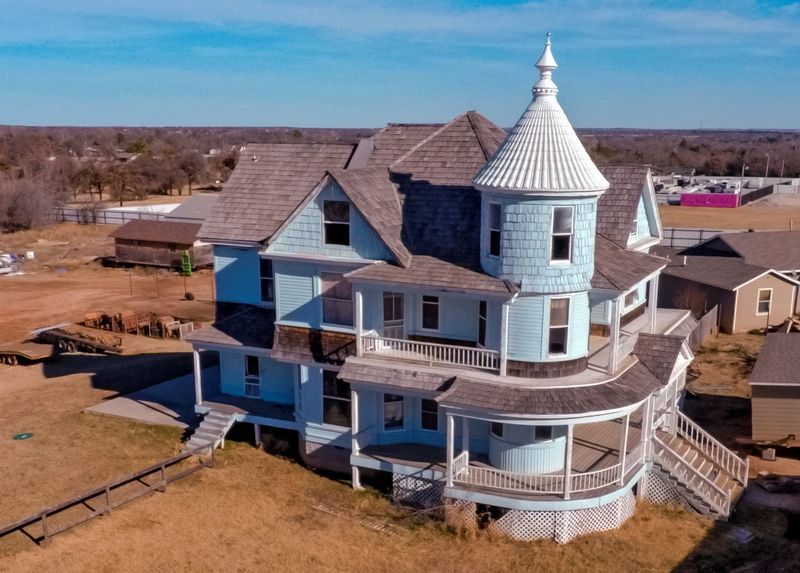
Natural materials and honest craftsmanship define the Goodholm Home, a quintessential Craftsman bungalow from 1912. The low-pitched roof extends over a deep front porch supported by tapered stone columns that blend seamlessly with the stone foundation.
Every element serves both function and beauty. Exposed rafter tails, hand-carved brackets, and multi-paned windows demonstrate the Craftsman philosophy that rejected mass production in favor of artisanal quality.
Anton Goodholm, a Swedish immigrant carpenter, built this home with his own hands as a testament to his skill. His attention to detail appears in custom woodwork throughout the property. The home represents the democratic ideals of the Arts and Crafts movement, which aimed to create beautiful, well-crafted homes accessible to middle-class families rather than just the wealthy.
7. Airplane Bungalow: Soaring Style in Paseo Arts District
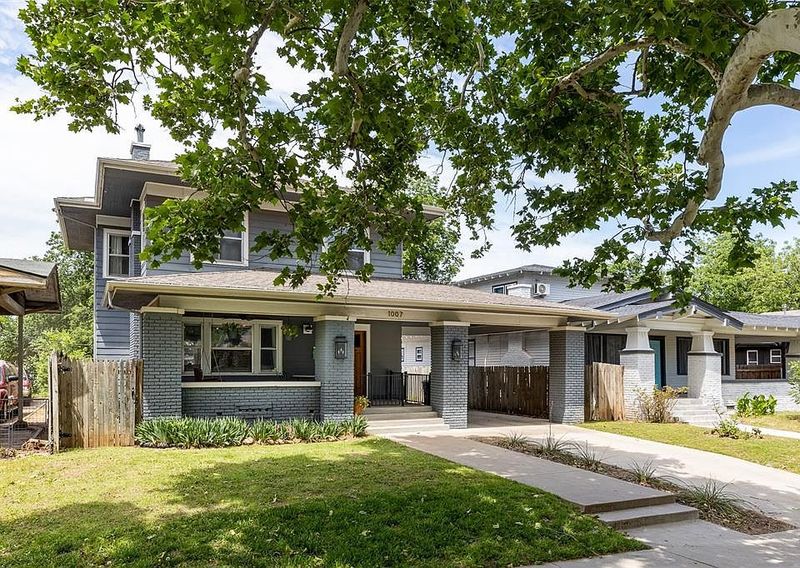
Resembling a pilot’s cockpit, the distinctive second-story “pop-up” gives the Airplane Bungalow its memorable name and unique silhouette. This rare architectural style combines elements of Craftsman design with Asian influences, featuring deep eaves, exposed rafters, and a dramatic front porch.
The compact second story typically housed a single room with windows on all sides, designed to maximize ventilation in pre-air conditioning days. This clever adaptation to Oklahoma’s hot climate made these homes particularly comfortable during summer months.
Though less common than standard bungalows, several excellent examples survive in OKC’s historic districts. This particular 1922 specimen showcases the innovative thinking of early 20th century designers who created practical homes with distinctive character, proving that functional design can also be visually striking.
8. Tudor Cottages: Storybook Charm in Crown Heights
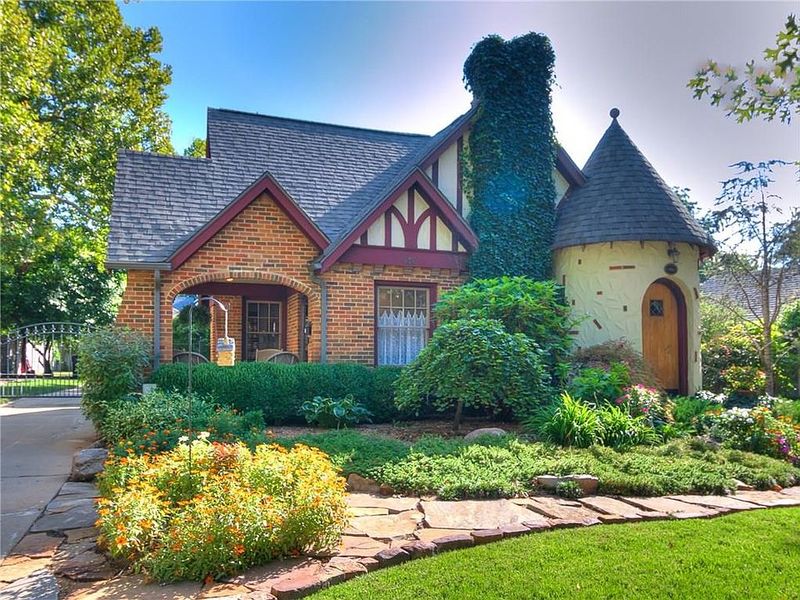
Straight from a fairy tale, these 1930s Tudor cottages feature steeply pitched roofs, decorative half-timbering, and arched doorways that transport viewers to medieval England. Their modest size belies the wealth of architectural details packed into each facade.
The combination of brick, stone, and stucco creates visual texture that changes with the light throughout the day. Whimsical touches like rounded doors, diamond-paned windows, and decorative chimneys give each home a distinct personality despite sharing the same architectural vocabulary.
These homes emerged during the Storybook Style movement between the World Wars, when Americans sought comfort in romantic European designs. Crown Heights contains an exceptional collection of these cottages, each one slightly different but contributing to a cohesive neighborhood character that continues to charm visitors and residents alike.
9. English Tudor Cottage: Nichols Hills Elegance in Miniature
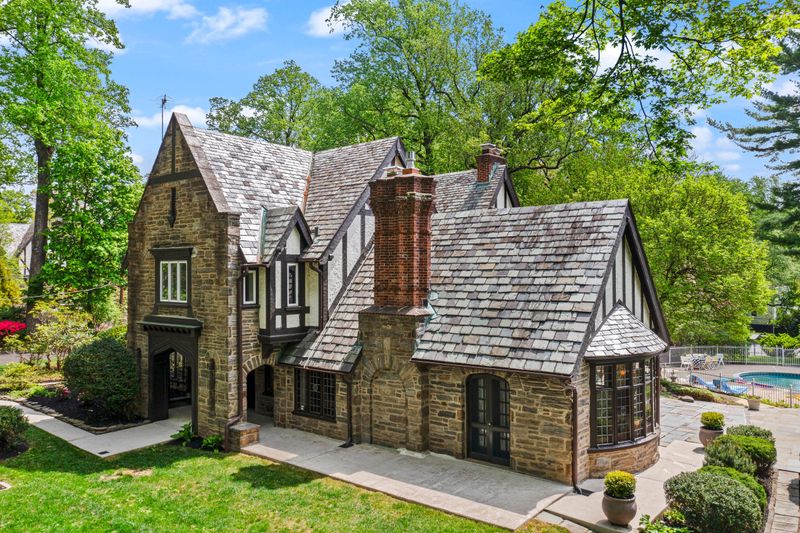
Nestled among larger mansions, this petite English Tudor cottage proves that architectural excellence doesn’t require massive scale. The steep cross-gabled roof and prominent chimney create a vertical emphasis that makes the home appear larger than its actual footprint.
Hand-laid brick in varied tones forms a rich tapestry across the facade, interspersed with decorative stonework around windows and doors. The asymmetrical design includes a recessed entrance with a rounded archway that adds mystery and invitation simultaneously.
This 1927 gem represents the “Period Revival” movement that swept America after World War I. Wealthy oil executives and merchants built these homes as symbols of established taste and refinement. Today, this architectural style remains among the most sought-after in Oklahoma City’s historic neighborhoods, commanding premium prices and inspiring loving restoration.

